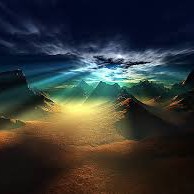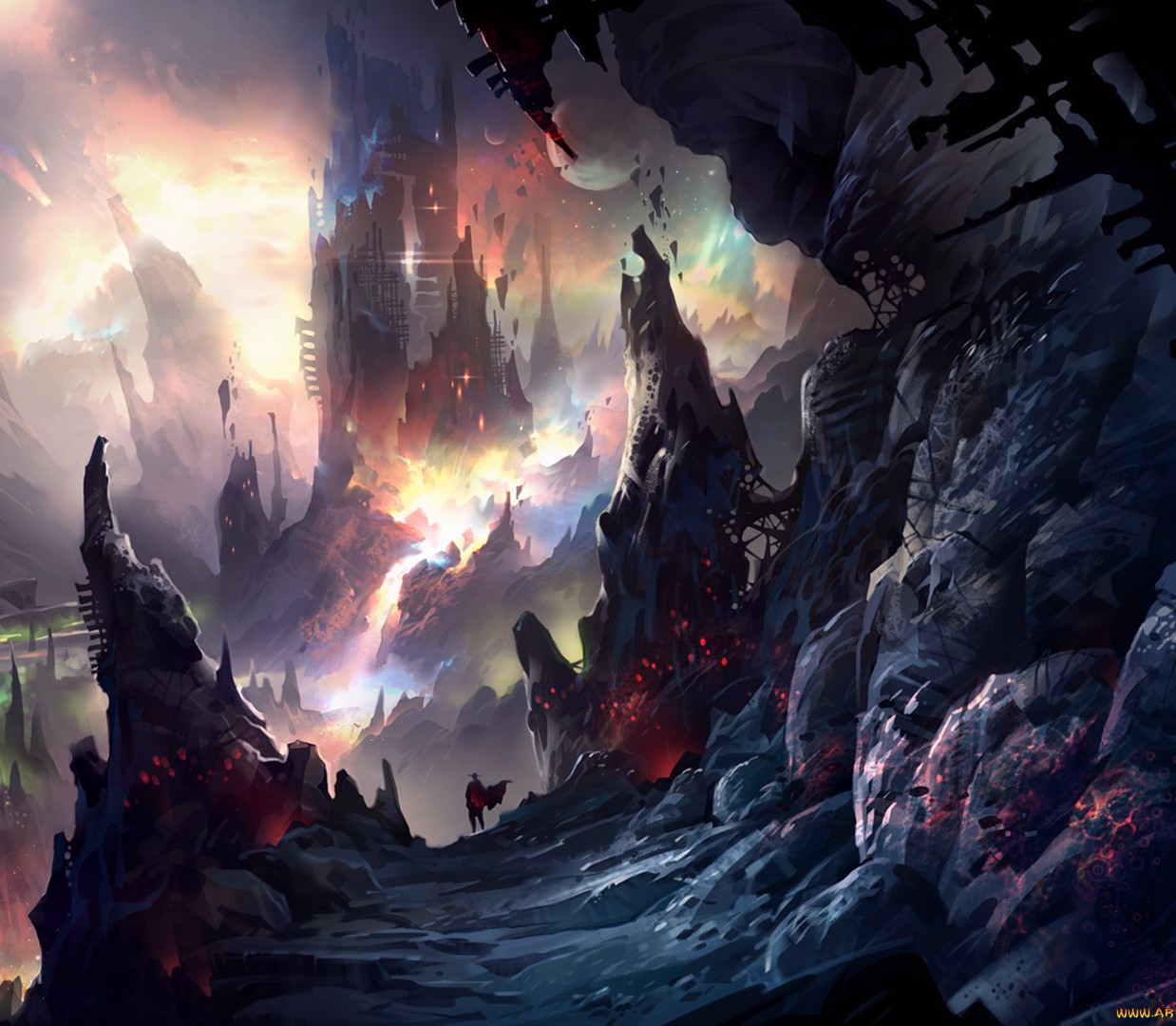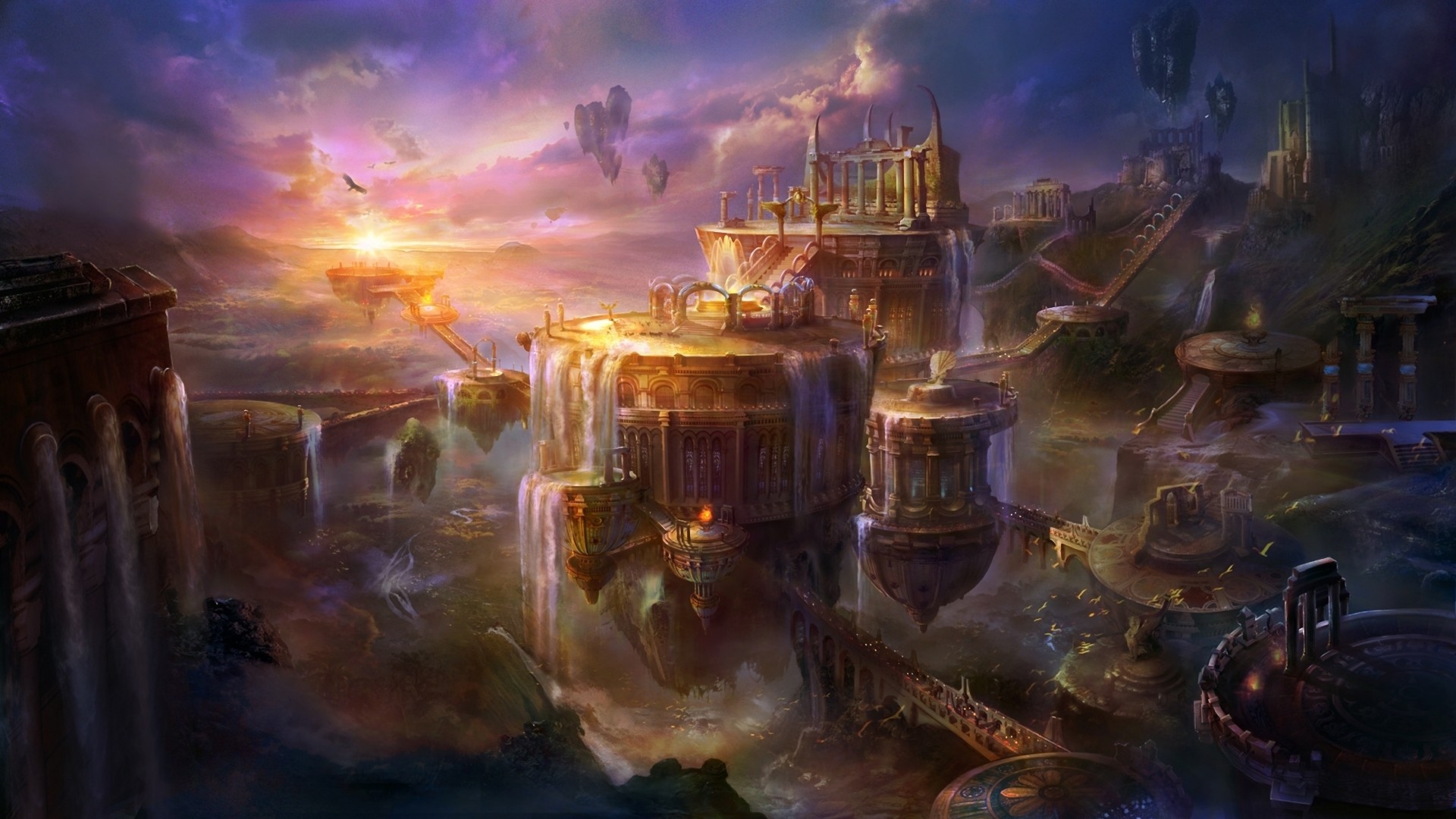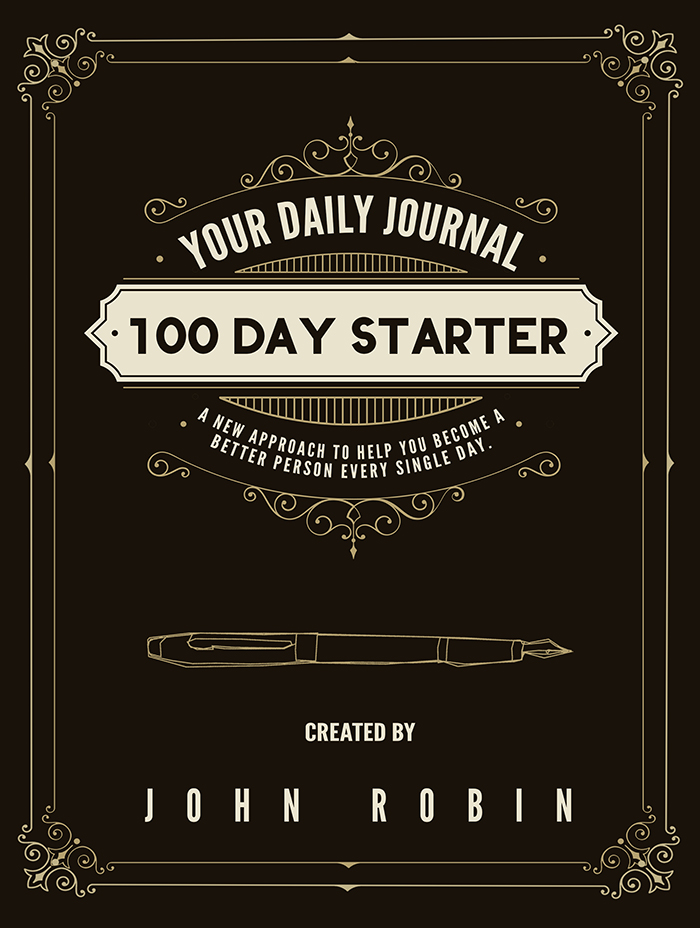Welcome to September! I’m taking a moment away from my morning writing routine to introduce our topic, and thought that while I do so, I’ll take some time to reflect more on this great fantasy genre I write in and appreciate, via a detailed research tour, the diversity that exists around the unique narratives I’ve explored.
This month, our contributors will be writing more about what it means to cross genres or explore other aspects of fantasy, so to kick it all off, let’s talk about fantasy and just what it is and what sets it apart from the other genres.
The fantasy genre is set apart from other genres in that it includes elements of the fantastic that vary from our mundane world of everyday experience. It is often categorized broadly based on the principles established in Farah Mendlesohn’s Rhetorics of Fantasy, wherein classification is determined on the manner by which the fantastic enters the narrative.
Portal fantasy refers to stories wherein the fantasy world is entered by some means from the real world. Often, the story takes on a quest form, where the basis of the quest relates to some manner of navigating the fantastical world. Examples of portal fantasy stories include:
- C. S. Lewis’s novel The Lion, the Witch and the Wardrobe
- L. Frank Baum’s novel The Wonderful Wizard of Oz
- Lewis Carroll’s Through the Looking Glass
- Stephen R. Donaldson’s Mordent’s Need
- Diana Gabaldon’s Outlander
Immersive fantasy refers to stories wherein the reader encounters the fantastical world through the eyes and ears a protagonist who is part of the fantastic world, without an explanatory narrative. The fantastic world is the real world for the characters who narrate it. Examples of immersive fantasy include:
- Mary Gentle’s Ash
- China Miéville’s Perdido Street Station
- Ann McCaffrey’s Dragonriders of Pern
- Frank Herbert’s Dune
- J.R.R. Tolkien’s The Hobbit, The Lord of the Rings, and The Silmarillion
- Piers Anthony’s A Spell for Chameleon
- George R. R Martin’s A Song of Ice and Fire series
- Steven Erikson’s Malazan series
- Terry Goodkind’s Sword of Truth series
Intrusion fantasy refers to stories wherein the fantastic intrudes on reality (in contrast to portal fantasies, where the opposite happens), and the protagonists’ engagement with that intrusion drives the story. Intrusion fantasies are normally realist in style, because they assume the normal world as their base, and rely heavily on explanation and description. Immersive and portal fantasies may themselves host intrusions. Examples of intrusion fantasy include:
- Bram Stoker’s Dracula
- H. P. Lovecraft’s works
- J.K. Rowling’s Harry Potter series
Finally, liminal fantasy refers to a relatively rare type of story, where the fantastic enters a world that appears to be our own, but this is not perceived as intrusive but rather as normal by the protagonists, and this disconcerts and estranges the reader. Such fantasies adopt an ironic, blasé tone, as opposed to the straight-faced presentation of most other fantasy. An examples of liminal fantasy is Joan Aiken’s stories about the Armitage family, who are amazed that unicorns appear on their lawn on Tuesday, rather than Monday.
 Crossing genres in fantasy, and further divisions
Crossing genres in fantasy, and further divisions
Fantasy can be classified based on other elements that cross over into genre, and this categorization of various fantasy sub-genres is a much better way of grouping together some of the very diverse works that have come into being in our present day. Let’s start by looking at some of the core, or “pure” kinds of fantasy.
Epic fantasy (often mistakenly combined with high fantasy) is characterized by a focus on large scale conflict and how it affects the world at large, often long-winded narratives, a large cast of characters, magic as a key part of plot/characters abilities, reliance on lots of subplots, and huge word counts (120k+ words). Epic fantasy is home base for this blog, and as a writer, I love epic fantasy. Some classic example of epic fantasy books:
- The Wheel of Time by Robert Jordan
- The Sword of Truth by Terry Goodkind
- The Lord of the Rings by J.R.R. Tolkien
- The Belgariad by David Eddings
- Memory, Sorrow and Thorn by Tad Williams
- The Malazan series by Steven Erikson
High fantasy is quite similar to epic fantasy (hence why the two subgenres are often used interchangeably), except the focus in high fantasy is more on the setting and changes and choices made by the protagonist. It’s less about the scale of conflict and more about how the large world affects a specific person. It’s usually about the journey of the hero through an exotic landscape, where the inner journey of the character is as important as the ultimate quest or goal. While I love epic fantasy, my third novel was a high fantasy novel, and even in my own epic fantasy work, I prefer to focus on character journeys. Some great examples of high fantasy books:
- The Name of the Wind by Patrick Rothfuss
- The Hobbit by J.R.R. Tolkien
- Mistborn by Brandon Sanderson
- The Wizard of Earthsea by Ursula K. LeGuin
Low fantasy is set apart from high fantasy in that it does not focus on heroes or sweeping vistas. Often, it’s a grittier anti-hero story. It also is characterized by less, or even non-existent magic. Low fantasy books often explore moral ambiguity and flawed humanity, and the limitation on magic allows for more exploration of the aspects of the real-world human struggle within the immersive fantasy setting. The novel I’m currently writing would fit well in the low fantasy definition, with the exception of magic (that said, magic in this novel functions like to our present day technology, so the limitations placed on my characters therein are akin to those placed on humans in our present day world). Some great examples of low fantasy books:
- Prince of Thorns by Mark Lawrence
- Heroes Die by Matthew Woodring Stover
- Among Thieves by Douglas Hulick
- A Song of Ice and Fire series by George R.R. Martin
- The First Law Trilogy by Joe Abercrombie
- Conan the Barbarian series by Robert E. Howard
- Dragonsbane by Barbara Hambly
Mundane fantasy takes a step further in the “anti-high” direction than low fantasy. The distinction exists because some books have pushed the boundaries so far by subtracting fantasy elements, for instance, presenting a mundane world rather than one rich with intricate world building, and rather than a high, mythic presentation, these stories are often contemporary in style. Some great examples of mundane fantasy:
- The Ocean At the End of the Lane by Neil Gaiman
- The Mortal Instruments by Cassandra Claire
- Jonathan Strange & Mr. Norrell by Susanna Clarke
Hard fantasy might be seen as a slight crossover between hard science fiction and fantasy, wherein logic and reason rule the pages of the fantasy tale, much like how scientific rigor lies behind every consideration in a hard science fiction novel. But it’s a mistake to think of hard fantasy as simply scientific magic, but rather, fantasy where the narrative is concerned heavily with why behind how the world and the magic works the way it works. Examples of hard fantasy include:
- Waldo & Magic Inc by Robert A. Heinlein
- Three Hearts and Three Lions by Poul Anderson
- A Song of Ice and Fire by George R.R. Martin (for its rigorous world building)
- Mistborn by Brandon Sanderson
 There are many other types of fantasy subgenres, but here are a few that are also worth mentioning as they are defined by how they incorporate elements of other genres:
There are many other types of fantasy subgenres, but here are a few that are also worth mentioning as they are defined by how they incorporate elements of other genres:
- Coming of age fantasy, where the protagonist deals with loss or alienation, influenced by the tradition of tales like Candide, Jane Eyre, and Tom Sawyer. The focus is often on the protagonist finding out more about who they are, and their journey is one of self-discovery. The Name of the Wind by Patrick Rothfuss and Harry Potter are great examples of coming of age fantasy tales.
- Swashbuckling fantasy, with a focus on adventure and romance and men swinging swords with many a wise crack. There is also a strong focus on heroism and the upholding of virtues, so the downtrodden are protected, women are cared for, the loyal are rewarded. The Three Musketeers is a great example of swashbuckling fantasy, as is The Blade Itself by Joe Abercrombie.
- Grimdark fantasy, perhaps viewed as a gritty reaction to the clean romantic-hero fantasy, fantasy where the story is not happy, or glamorized, and it drips with misery, is ruled by anti-heroes, bad decisions, and bleak humor. Great examples of grimdark fantasy include Broken Empire by Mark Lawrence, the Drenai Saga by David Gemmell, The Dark Tower by Stephen King, and The Black Company by Glen Cook.
- Dark fantasy, a blend of horror and fantasy, where elements that define the horror genre are at play in a fantasy setting. This subgenre is strongly defined by the atmosphere it exhibits, and there are usually elements of gothic fiction, and magic might be connected to the occult. Some examples: The Warded Man by Brent Weeks, American Gods by Neil Gaiman, and Elric of Melinbone by Michael Moorcock
- Urban fantasy, a relatively new subgenre, where the focus is often on one setting, often with a contemporary feel, but it also often is characterized by being grittier (with hints of crime fiction or noir), and often elements of mystery, horror, and romance. The Dresden Files by Jim Butcher is a great example of urban fiction, as is The Magicians by Lev Grossman.
- Contemporary fantasy, set in the modern world, has become popular after Harry Potter. Other great works of contemporary fantasy worth noting are: Holly Black’s Spiderwick Chronicles, Neil Gaiman’s Neverwhere, Charles DeLint’s Onion Girl, and Kevin Hearne’s The Iron Druid Chronicles.
- Paranormal fantasy, partly derived from the paranormal romance subgenre, is often defined by adventure and the characters have a contemporary, snarky bent. Think Buffy the Vampire Slayer. In fact, many paranormal fantasy books involve vampires (there is even a vampire fantasy subgenre too). A great example of paranormal fantasy is the Twilight Mist series by Marion Zimmer Bradley.
- Science fantasy, where there is more focus on technology, often set in a more contemporary period. Often times works of science fantasy are hard to separate from the science fiction genre, as worlds might be far past or far future extrapolations of our present world, wherein exotically different settings and peoples have arisen but where such societies have reached a similar level of advancement as our present day, but science fantasy books will often include some trace of magic as well. Great examples of science fantasy: Frank Herbert’s Dune, Gene Wolfe’s The Book of the New Sun, Roger Zelazny’s Chronicles of Amber, and Anne McCaffrey’s Dinosaur Planet.
- Steampunk fantasy, based on the premise that steam power from the Victorian era took hold as a major form of advancement, usually set in our world, but with elements of magic or other aspects of the fantastic. For instance, The Stone of Alchemy by Ekaterina Sedia combines elements of alchemy, while Cold Magic by Kate Elliot is set in a world where the steam innovation is happening but the power of mages still has hold of the world.
- Magic realism, derived from literary fiction, where magic and the mundane world do not exist in conflict. The literary aspect is defined by the focus of these stories, being on exploring through character what it’s like to live in a world where magic is normal and how it defines the human experience. The term was coined by the Cuban writer Alejo Carpentier in the 1940s, building on the already existing Latin American art forms wherein, it is theorized, the art was a form of reconciling the competing realities of being colonizers and being colonized. Magic realism often explores a world that is real but contrary to our objective understanding, and is epitomized by the works of China Mieville and Neil Gaiman. Time is not linear. Causality is subjective. It often leaves readers feeling tranquil and enchanted.
And this is just scratching the surface! You can read more by doing some research on the many subgenres of fantasy if you’re curious about all the nooks and crannies, including Bangsian fantasy, the subgenre concerned with exploring the afterlife in the manner of the author John Kendrick Bangs, who did so by way of famous dead people, with a heavy dose of humor, and paved the way for many others (the Riverworld series by Philip Jose Farmer is worth noting); or if you’re curious about the HUGE subgenre known as media tie-in fantasy, so big it’s even got it’s own organization called the International Association of Media Tie-In Writers.
Look forward to some more blog posts this month about the influence of other genres in fantasy, from some of our talented crew of contributors! Now, time for me to get back to writing my low grimdark hard fantasy novel.



Reblogged this on Archer's Aim and commented:
How do you like your fantasy? Here’s and excellent discussion of the sub-genres of fantasy with all the nuances. Fantasy has so many different ways of being written and enjoyed which keeps it interesting. Reblogging on Archer’s Aim.
Pingback: Crossing genres: exploring the different aspects of fantasy fiction | John Robins Blog | Cindy Dorminy's Writing World
Reblogged this on Kim's Author Support Blog.